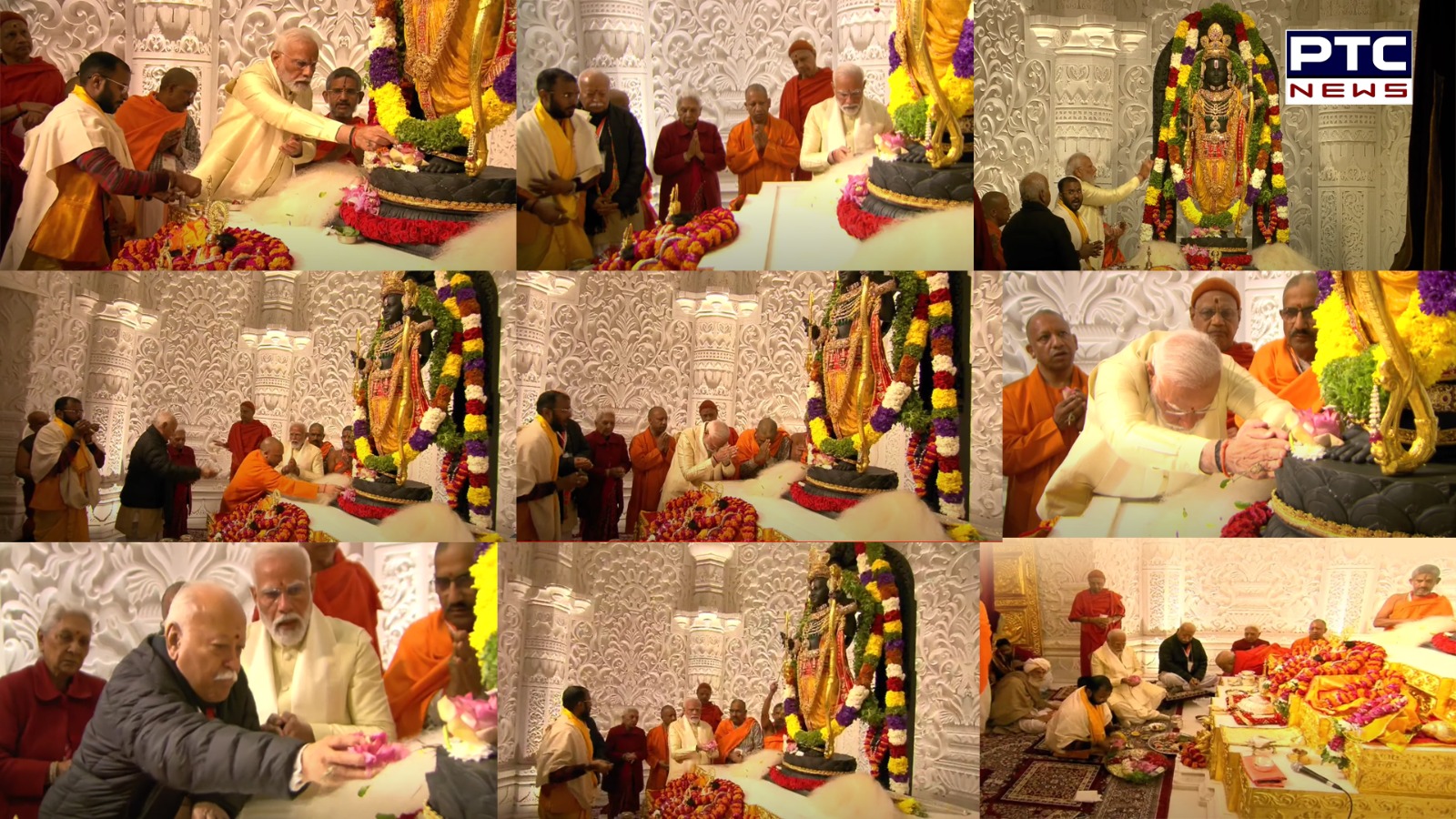

From construction of Babri Masjid in 1528 to Ram Temple opening in 2024 | A Chapter Concluded
Ayodhya's Ram Temple: In a momentous occasion, Prime Minister Narendra Modi inaugurated the grand Ram Temple in Ayodhya on Monday, marking the culmination of a saga that spans nearly 500 years. The event, attended by religious leaders, politicians and Bollywood celebrities saw the unveiling of a temple adorned with nearly 400 pillars, 44 doors and a brand new idol of Lord Ram.
1528 | The Babri Masjid's Origin: The roots of the Ram Temple movement trace back to 1528 when Mir Baqi, a commander of Mughal emperor Babur, constructed the Babri Masjid. This event laid the foundation for decades of conflict, driven by the belief that the mosque was built on the ruins of a Hindu temple.
1751 | A Maratha Claim: A historical shift occurred in 1751 when the Marathas sought control of Ayodhya, Kashi, and Mathura. This set the stage for numerous contentions over the years, shaping the course of the Ayodhya dispute.
1858 | Nihang Sikhs' Demand In 1858: Nihang Sikhs made a claim to Babri Masjid as Lord Ram's birthplace, foreshadowing the struggles that lay ahead. The Supreme Court's 2019 ruling acknowledged this historical incident, adding to the complexity of the dispute.
1885 | The First Legal Claim: The legal battle began in 1885 when Raghubar Das, a priest of the Nirmohi Akhara, filed the first suit seeking permission to build a temple on the outer courtyard of the mosque. This marked the initiation of a legal precedent that would keep the dispute alive.
/ptc-news/media/media_files/bA6rDOyrNLIE5oLEPWHf.jpg)
1949 | 'Ram Lalla' Idols Inside Babri Masjid: Tensions heightened in 1949 when 'Ram Lalla' idols were placed inside the Babri Masjid, sparking legal battles over ownership. The property dispute entered the courts for the first time, intensifying religious sentiments.
1950-1959 | Legal Suits Multiply: The following decade witnessed a surge in legal suits, with Nirmohi Akhara seeking worship rights to the idols and the Sunni Central Waqf Board aiming for possession of the site. The legal quagmire deepened as multiple parties vied for control.
1986-1989 | Babri Masjid Locks Opened: In a controversial move in 1986, during the Rajiv Gandhi-led Congress government, the locks of the Babri Masjid were opened, allowing Hindus to worship inside. This decision became a pivotal moment, further fueling tensions and shaping the narrative of the Ram Janmabhoomi movement.
1990 | Rath Yatra and Failed Demolition Attempt: LK Advani's Rath Yatra in 1990 aimed to mobilse support for the temple. Despite a failed attempt to demolish the mosque, it marked a significant turning point in the movement, propelling political leaders to advocate for the 'liberation' of Ram Janmabhoomi.
1992: The Infamous Demolition: The climax came in 1992 with the demolition of the Babri Masjid, despite assurances to the Supreme Court. The cataclysmic event and subsequent riots changed the political landscape of India forever.
/ptc-news/media/media_files/DHs37vRNxe8MCjTLkzG6.jpeg)
1993-1994 | Post-Demolition Riots: Communal riots erupted across India in the aftermath of the Babri Masjid's demolition. The Central Government's acquisition of the disputed area faced legal challenges, leading to a Supreme Court ruling in 1994 that upheld the acquisition.
2002-2003 | ASI's Excavation and Allahabad High Court Hearing: In 2002, the title case was initiated in the Allahabad High Court, accompanied by excavations conducted by the Archaeological Survey of India (ASI). The ASI asserted the discovery of evidence supporting the existence of a Hindu temple beneath the mosque. Despite these developments, the legal conflict endured.
2009-10 | Liberhan Report Submission: The Liberhan Commission submitted its report in 2009, revealing details of the Babri Masjid demolition and implicating key leaders. The Allahabad High Court's 2010 verdict attempted to settle the dispute, but it faced appeals and further legal challenges.
2019 | Supreme Court's Historic Judgment: In a landmark 2019 judgment, the Supreme Court awarded the entire disputed land to Hindus for the construction of the Ram Temple and allocated an alternate site for the construction of a mosque.
2020 | Ram Temple Foundation Stone: On August 5, 2020, Prime Minister Narendra Modi laid the foundation stone for the Ram Temple, establishing the Shri Ram Janmabhoomi Teerth Kshetra Trust and paving the way for the construction of the temple.
/ptc-news/media/media_files/EwKz8wVVchUc477tJvnR.jpeg)
2024 | Ram Temple Pran Pratishtha: On January 22, 2024, Prime Minister Narendra Modi led the consecration ceremony of the idol of Ram Lalla in the newly-built temple, marking the official inauguration of the grand Ram Temple in Ayodhya.
Also Read | Arun Yogiraj, artisan behind Ram Lalla idol, says, 'I feel like I am in a dream world'
Also Read | Ram Temple consecration: Celebrity glitter at grand event | Watch
Also Read | Ram Mandir Live Updates: Exclusive visuals of Ram Lalla idol out; PM Modi performs aarti
Also Read | UNGA president: Delighted to arrive in New Delhi when India celebrating 'second Diwali'
-
